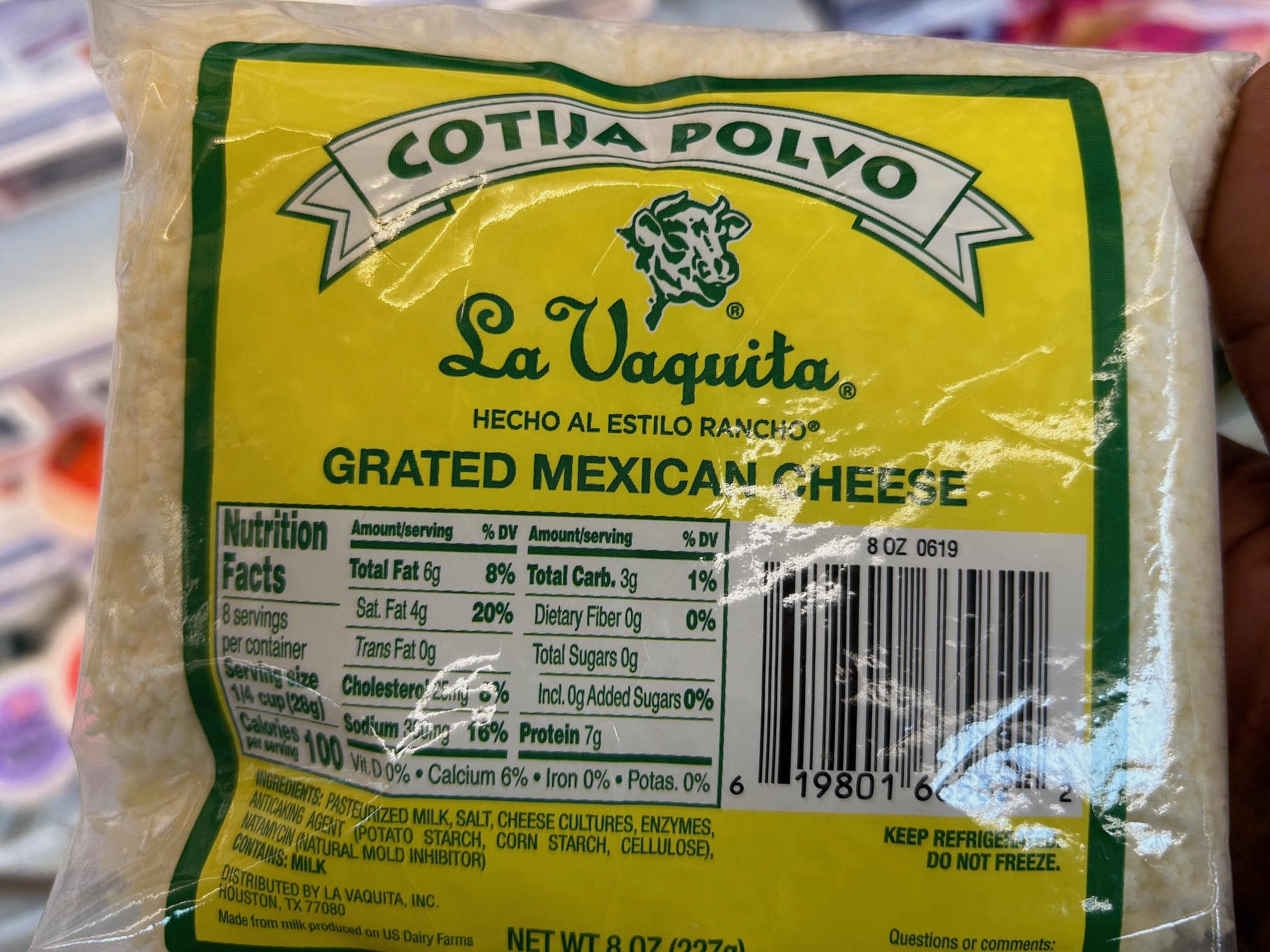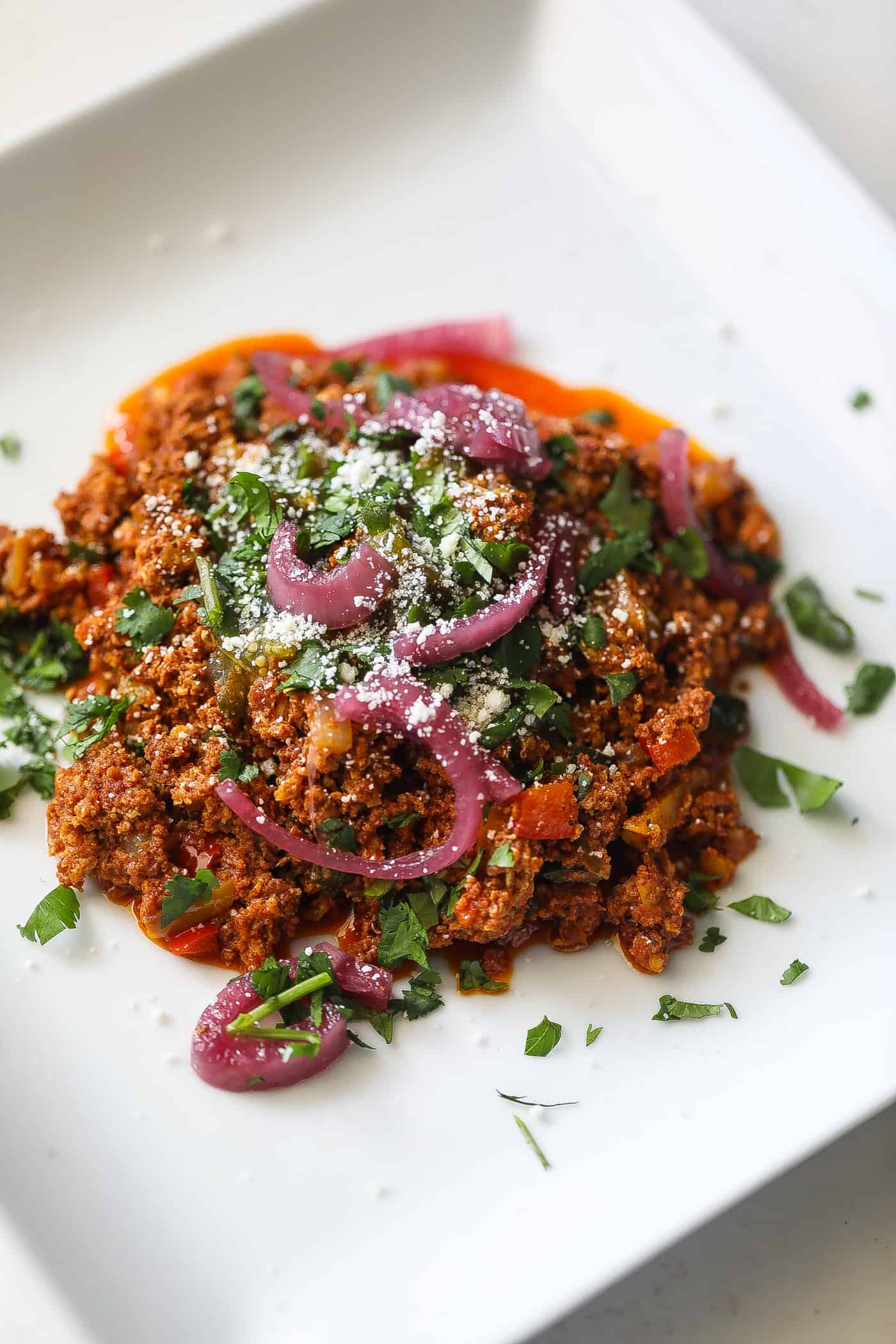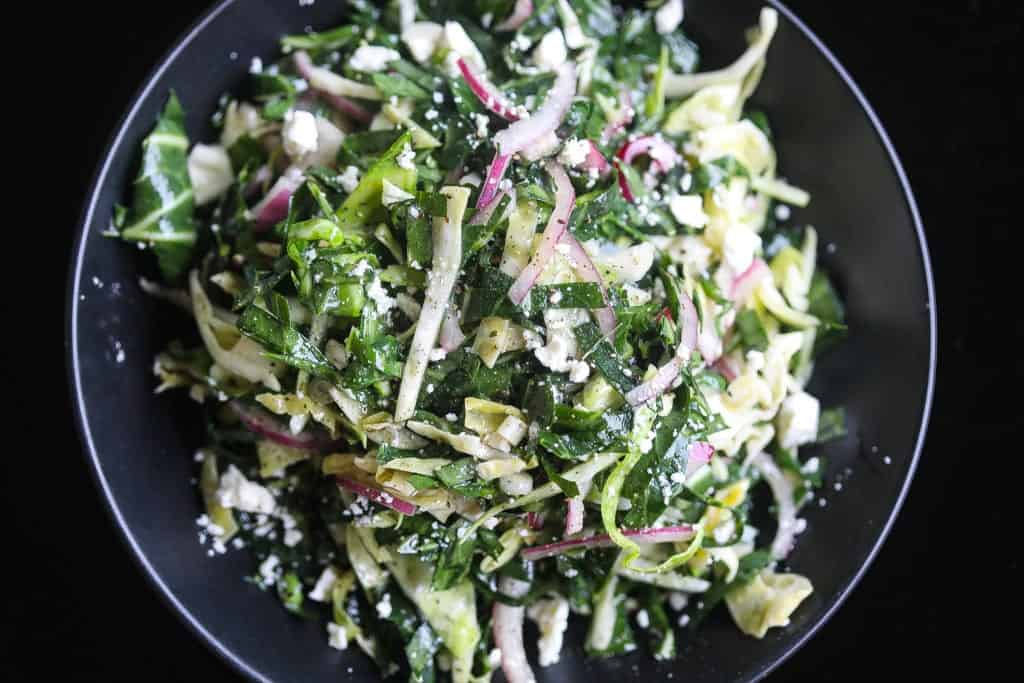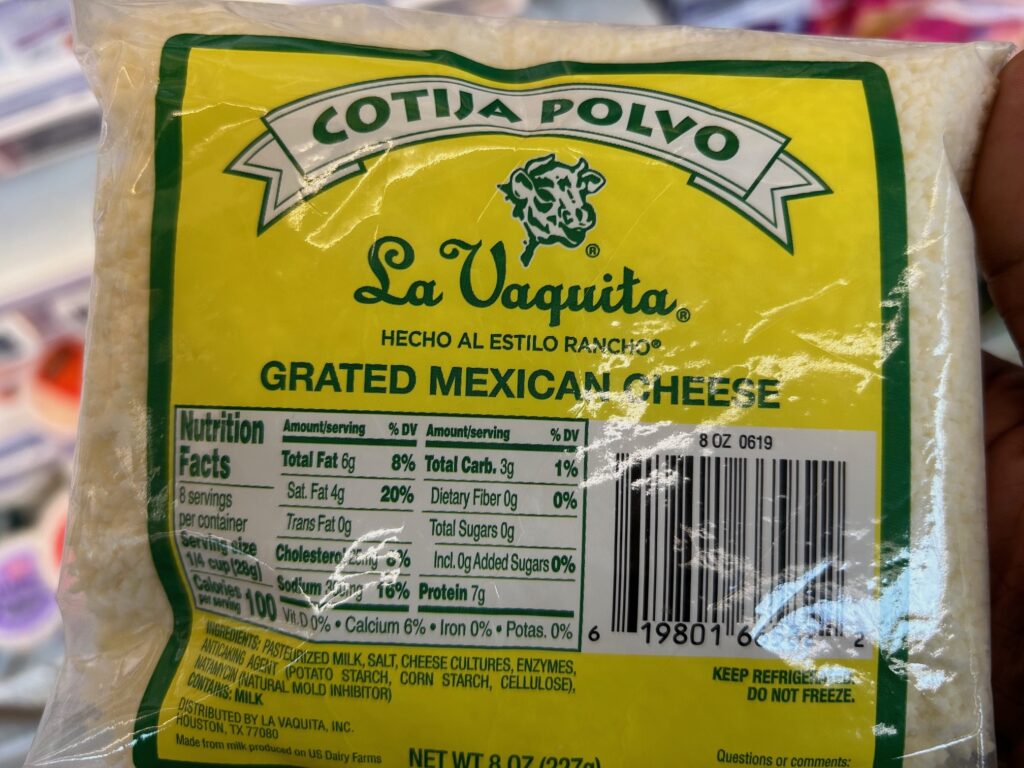Cotija cheese, a staple in Mexican cuisine, is known for its salty flavor and crumbly texture. It's a versatile cheese that enhances a variety of dishes, from tacos to salads.
However, when Cotija cheese is not available, there are several excellent substitutes that can mimic its unique characteristics. This article explores the best Cotija cheese substitutes, offering insights into their flavors, textures, and how to use them effectively in your cooking.

Cotija Cheese Substitute Key Takeaways
- Feta cheese is a close substitute to Cotija, offering a similar salty and crumbly profile, making it ideal for salads and roasted vegetables.
- Parmesan cheese, often referred to as the 'Parmesan of Mexico', shares a nutty, full-bodied taste with Cotija and can be used as a grated topping.
- Monterey Jack cheese provides a melty texture suitable for dishes like quesadillas and nachos, where a gooey consistency is desired.
- When choosing a substitute, consider both the flavor profile and texture of the cheese to ensure it complements the dish appropriately.
- Storage and handling are crucial for maintaining the freshness and flavor of cheese substitutes, with aged cheeses like Cotija having different requirements than fresh cheeses.
Understanding Cotija Cheese and Its Unique Qualities
The Origin and Characteristics of Cotija Cheese
Cotija cheese, often hailed as the Parmesan of Mexico, is a staple in Mexican cuisine with its robust and salty flavor profile. It has a dry and granular texture when grated, making it a popular topping for dishes like tacos and salads. Originating from Mexico, Cotija cheese has a distinct taste that is sometimes compared to feta cheese, but with a more pungent aroma.
Cotija's unique qualities make it an irreplaceable ingredient in many traditional Mexican dishes, providing a sharpness that enhances the overall flavor.
While fresh cheeses like queso fresco offer a softer texture and milder taste, aged cheeses such as Cotija boast a pronounced flavor and crumbly texture. This cheese's versatility allows it to be used freshly grated or melted, adding authenticity and zest to any Mexican meal.
Cotija vs. Queso Fresco: Comparing Textures and Flavors
When exploring the landscape of Mexican cheeses, the distinction between cotija and queso fresco becomes particularly noteworthy. Cotija cheese is often celebrated for its robust flavor and granular texture, making it a staple for grating over dishes like tacos and salads. It's frequently likened to the 'Parmesan of Mexico' due to its nutty taste and sharpness.
Queso fresco, on the other hand, offers a softer, more delicate texture and a milder taste. It's a fresh cheese that provides a subtle creaminess to dishes, contrasting with cotija's pronounced saltiness and dryness. Here's a quick comparison:
- Cotija: Aged, dry, crumbly, and salty.
- Queso Fresco: Fresh, soft, and mildly salty.
While both cheeses can be crumbled, cotija's saltier and firmer nature makes it a bold flavor addition, whereas queso fresco lends a light, fresh topping to the culinary canvas.
Choosing between these two cheeses often depends on the desired flavor intensity and texture in your dish. Whether you're garnishing a salad or enriching a classic chiles rellenos, each cheese brings its unique character to the table.
The Role of Cotija Cheese in Traditional Mexican Cuisine
In the realm of traditional Mexican cuisine, cotija cheese stands out as a distinctive element that brings a depth of flavor to a myriad of dishes. Its robust, salty character and crumbly texture make it an indispensable topping for tostadas, enchiladas, and beans.
Cotija's ability to enhance the savory notes in a dish is unparalleled, making it a favorite among chefs and home cooks alike.
Cotija is often celebrated as the 'Parmesan of Mexico', a testament to its full-bodied taste and versatility in cooking. Whether it's freshly grated over a steaming plate of chiles rellenos or melted into a warm elote concoction, cotija cheese is a hallmark of authenticity in Mexican gastronomy.
- **Key Uses of Cotija Cheese: **
- Sprinkled atop tacos and salads
- Grated over traditional chiles rellenos
- Melted into corn-based dishes like elote

Top Cotija Cheese Alternatives for Cooking

Feta Cheese: A Tangy and Crumbly Cheese Substitute
When it comes to finding a substitute for Cotija cheese, Feta cheese stands out as a popular choice. Its crumbly texture and salty flavor closely mimic those of Cotija, making it an excellent alternative in various dishes. Feta is versatile and can be used in salads, sprinkled over roasted vegetables, or as a flavor enhancer in pizzas and pastas.
Here's a quick guide on how to use Feta as a substitute:
- Crumble Feta over tacos or salads for a burst of flavor.
- Incorporate it into your sandwich for an added salty kick.
- Use it as a topping on pizza or pasta to enhance the overall taste profile.
Goat cheese is another crumbly substitute. For convenience goat cheese crumbles work well over the traditional soft goat cheese log. Crumbles texture do no match cotija's but depending on what you use you might be able to mimic that salty flavor.

Parmesan Cheese: A Hard Cheese Alternative
When Cotija cheese is not on hand, Parmesan cheese stands as a robust alternative and for my money is the best cotija cheese sub. It's not a Mexican cheese but it's an aged cheese with a hard texture and strong, salty flavor that can mimic the punch that Cotija brings to dishes. Parmesan is versatile and can be grated over pizzas, pastas, and even incorporated into sandwich toppings for an umami boost.
- Parmesan is aged longer than Cotija, resulting in a drier and harder cheese.
- It offers a nutty and slightly fruity flavor profile
- Parmesan can be used in a 1:1 ratio as a substitute for Cotija in recipes.
While Parmesan may not provide the exact taste of Cotija, it is another cow's milk cheese that adds a similar depth of flavor that enhances the overall dish.
Another good hard cheese alternative is pecorino romano cheese. It is a salty Italian cheese made from sheep's milk. It has a sharp, tangy flavor and is often used as a grating cheese in pasta dishes or salads.

How to Choose the Right Substitute for Your Dish
Considering the Flavor Profile of Your Recipe
When selecting a substitute for Cotija cheese, it's crucial to consider how the alternative will harmonize with the other ingredients in your dish. The flavor profile of your recipe should guide your choice. For instance, a cheese with a mild taste may be lost among robust or spicy flavors, where Cotija's salty punch is intended to stand out.
Feta cheese, with its tangy and crumbly nature, can be a delightful addition to salads and lighter fare. However, for dishes that require a cheese that melts well, such as quesadillas or enchiladas, Monterey Jack is a more suitable option due to its creamy texture and mild flavor.
Remember, the goal is to complement the dish without overpowering it. The right cheese will enhance the overall taste experience, respecting the balance of flavors that the original recipe intends to achieve.
Frequently Asked Questions
What is Cotija cheese and how is it used in Mexican cuisine?
Cotija cheese is a salty, crumbly white cheese from Michoacan, Mexico. It's often used sprinkled atop tacos, salads, and other dishes for its pungent aroma and slightly salty flavor, adding authenticity and zest to Mexican meals.
Can Feta cheese be used as a substitute for Cotija cheese?
Yes, Feta cheese is a good substitute for Cotija cheese due to its sharp and salty taste and crumbly texture. It's suitable for crumbling over salads or adding a tangy flavor to various dishes.
What are some other cheeses that can substitute for Cotija in recipes?
Parmesan cheese, Monterey Jack, Ricotta cheese, Cottage cheese, and Queso Fresco are all possible substitutes for Cotija, depending on the desired flavor and texture in the dish.
Is there a vegan or lactose-free alternative to Cotija cheese?
While specific vegan or lactose-free alternatives to Cotija cheese are not mentioned, one can look for plant-based cheese alternatives that mimic the salty and crumbly characteristics of Cotija.
How should I store cheese substitutes to maintain their freshness?
Cheese substitutes should be stored in the refrigerator, wrapped in cheese paper or wax paper to allow the cheese to breathe while preventing it from drying out or absorbing other flavors.
What should I consider when choosing a cheese substitute for melting vs. crumbling?
For melting, choose a cheese like Monterey Jack that melts smoothly. For crumbling, opt for cheeses like Feta or Parmesan that have a dry, crumbly texture similar to Cotija.
Conclusion
While cotija cheese holds a revered place in Mexican cuisine for its salty, crumbly texture and robust flavor, there are several viable substitutes that can be used in its absence.
Feta cheese, with its tangy profile, and Parmesan, known for its nutty and sharp taste, both offer similar textural qualities for sprinkling over dishes. For those seeking a milder flavor, queso fresco is a great alternative.
Each substitute brings its own unique qualities to the table, ensuring that your dishes maintain their authentic zest and flavor even when cotija is not available. So, whether you're garnishing tacos, topping salads, or enhancing your favorite Mexican recipes, these substitutes will ensure your culinary creations are nothing short of delicious.

